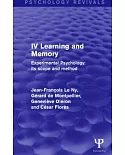This reprint of a 1979 book on psychology takes up where cognitive psychology left off; rather than considering human perception and thought as a function of the brain, ecological psychology
considers it a function of the entire human organism, of which the brain is a part (Ulrich Neisser, the founder of cognitive psychology, eventually moved toward this approach). The author of
this book begins squarely within it; the book’s fundamental argument is that visual perception is created by the relationship between the information received by the eyes in their sockets and
the body’s physical relationship to the ground and space. The brain triangulates the information sent to it, coordinating a complex visual system. Natural vision, according to the author, is a
process by which people move in order to see, and see differently depending on how they move. One result is the idea that vision is inseparable from point of view. Part one looks at the
environment. Part two looks at the information for visual perception. Part three looks at visual perception itself (which includes looking, moving, and manipulating objects), and part four
looks at depiction: human awareness of still pictures and film. Annotation ©2015 Ringgold, Inc., Portland, OR (protoview.com)





















